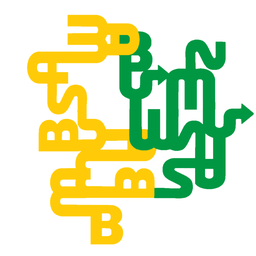- 25 Posts
- 204 Comments
Things like this are why I don’t put systemd on my machines. It’s too complicated for me. Too many things going on. I’ve moved away from mac os to linux specifically to avoid weird over-engineered solutions, I want to be able to understand my system, not just use it!
EDIT:
SystemD/Linux
We’re not there yet with systemd, but I would argue that Alpine Linux qualifies as “busybox/Linux” lol. It’s literally just the kernel, busybox, openrc, and a package manager stapled together. It’s so minimalist that it barely even exists! I love that distro so much!
Well, see, the thing is, minimalist distros like Arch or Void are more stable than “fully-featured” distros like ubuntu, just by virtue of having less software that could break. The reason I wouldn’t suggest them to newbies is because having less software installed by default means that the user is expected to know what software they need, and to know what program to debug if things do go wrong, which isn’t a reasonable thing to expect from someone coming from mac or windows or bsd.
Honestly filepickers are kinda cringe, no matter what display mode it uses. I just have a shortcut that basically does
find ~ | dmenu | xargs dragon-drop(well, the script itself is a little more complicated, but that’s the gist of it) so I can just search for files and drop them into the filepicker directly. Hopefully once everything switches to xdg-portal, someone can make a “filepicker” implementation that just does something like that directly.
I’m so confused, why does there need to be a daemon that creates /home? Can’t you just make it at install time and assume it’s always there? Is this made for ramdisk / immutable distros or something?
That’s because you know that “select none” is the correct tool to use in gimp most of the time. For lots of new users, “select all” seems like the more obvious option as opposed to “select none”. The reasoning is something like “I want to be able to edit the entire picture, so I should select all”. It doesn’t help that “select all” has the simpler keyboard shortcut of the two. So they press “select all”, then use a transformation tool like Scale or Rotate, and instead of simply transforming the layer like they would expect, it funnels them into the lovecraftian abomination of confusing UI design that is Floating Selection.
Everything else is dreamy.
Gimp spolied me. Now every time I’m forced to use a GUI app with lots of dropdown menu items, I get irrationally angry that I can’t just hit
/to search through them like I can in gimp lol.
Maybe they dislike the filepicker because it doesn’t support icon view, only list view (just like the standard gtk filepicker)? I remember a while back lots of people were getting their panties in a twist over it, it was a huge meme in the gnome hater community.

 5·7 days ago
5·7 days agoThat is true

 14·7 days ago
14·7 days agoI think the confusion here is selling software vs distributing source code. Free software can be sold, as long as you provide the source code and don’t try to stop others from redistributing copies for free. The busybox GPL lawsuits were about companies that redistributed busybox (or software built on top of busybox) without providing the source code. Whether or not they charged money for it isn’t relevant.

 16·7 days ago
16·7 days agoThat’s a good point! The FSF also developed LGPL for this reason (their particular example was something like OGG that is meant to displace the proprietary (back then) MP3), but you example with game engines is also a good one!
the one for AMD
It’s called PSP (Platform Security Processor), iirc
And to answer your question:
- Old-ass thinkpad as daily driver: Acquired
- RPI Pico: Acquired
- SOIC Chip programming clip: Acquired
- Motivation to get off my ass and actually flash libreboot and me-cleaner: In progress…
So that means I get a working webcam! It’s a win-win! /j

 9·7 days ago
9·7 days agoI agree that permissive licenses have their place for smaller projects (I personally use CC0 from small programs). The FSF suggests Apache license for programs with less than 300 lines (approximately) in order to avoid the overhead that you mentioned. The LGPL was also created in cases where allowing your free code to be used in nonfree contexts can help advance free software as a movement (e.g. writing a free replacement for a proprietary codec). But I also believe that if you really want to support free software, you have a moral duty to release anything “big” that you make under a copyleft license.

 12·7 days ago
12·7 days agoHow does it work with contributors? Does absolutely everyone have to consent to having the license changed? If one of the contributors doesn’t consent, can the maintainer “cut out” their contributions into a separate program and redistribute it as a plugin with the original license?

 23·7 days ago
23·7 days agoThey’re free to change the licence of future versions.
Why do you act like I don’t know that? The issue here is that once you realize that the license you chose does not reflect your intentions, the damage has likely already been done. From the article I linked:
I didn’t have the foresight to see this coming. I didn’t think people so lacked in the spirit of open source. I wanted to promote community contributions, not to have them monetized by other people who don’t even provide the source to their modifications. I wanted to grow the tools as a community, not have closed source forks of them overtake my own open source versions.
Selections are ways to restrict yourself from editing parts of the image. For example, if your select a rectangle, you will only be able to draw on that rectangle, nowhere else. “Select all” and “select none” both allow you to draw on the entire layer. The difference is how some tools such as as Scale, Rotate, Perspective Transform, etc. work.
So, for example, if you Select None, and then use the scale tool to make the layer twice as big, it will scale the pixels contained in the layer, and grow the layer boundaries to accommodate the new pixels. This is what you want most of the time.
If, on the other hand, you Select All, and then use the scale tool, it will cut out all of the pixels into a new Floating Selection, leaving the original layer empty and with the same size. This is a very confusing behavior. Actually, pretty much anything that involves Floating Selection is confusing.
Combination of both I guess? Like for the second one I found out that you can convert between selections and paths a long time ago just by stumbling upon the menu entry for it, but I had to look up how to apply transformations to paths
good circles and eclipse
I assume “eclipse” is a typo of ellipse? Anyway, just use the ellipse select tool (keybind:
e) to make a selection in the shape that you want, then fill it in with the bucket tool (b). Hold shift while using the bucket tool to fill in the entire selection, ignoring anything that’s drawn inside it. If you want to draw a ring rather than a completely filled circle, use the “border” command from the “select” dropdown menu to replace the ellipse/circle selection with its border.how to resize selection by corner
I’m curious, what is your usecase for this? I’ve never had to do it myself. But if I had to, here’s how I would do it: first, convert the seleciton to a path. Make sure the path is visible from the “Paths” dialog (you have to explicitly show the paths dialog using the “window > dockable dialogs” option. From then on, you can use any of the usual transform tools (perspective, resize, roate, etc) on the path. You just have to select the path icon under "Transform: " in the “tool properties” dialog to make sure you’re transforming the path, not a pixel layer. Once you’ve transformed the path to your liking, you can turn it back to a selection, fill it with color, or stroke it with a brush by right-clicking on it in the “layers” dialog.
Also, bonus tip: never use the dropdown menus, it’s a huge waste of time. Just press
/to pull up for the command palette and search for the tool you need.EDIT: I love lovingly ranting about gimp, I can do it four hours on end. I’m not some sort of gimp guru, but I know a thing or two. If anyone has any more questions, feel free to reply to this comment and I’ll do my best to give advice.
yeah, that’s the point of the joke. You’d think that the “default state” should be “select all” – I want to edit the entire layer, so I should select all of it. But no, “select all” has a bunch of weird obscure behaviour, “select none” is what you want most of the time, even though it gets the shortcut with more keys.







Gentoo seems fun, I wanna try it some day. I would also recommend Void if you’re looking for a distro with a boring old binary package manager (it’s what I use on my laptop). Although the package list in Void is rather barren, I would recommend installing Flatpak to help fill in the gaps for some of the missing packages. There’s also Alpine if you wanna go balls deep into the minimalism rabbithole. What makes Alpine so difficult is that it’s a musl libc distro, so anything that needs glibc (i.e. any “serious” gui application) needs to run through a compatibility layer like gcompat or flatpak. Void is available in both glibc and musl libc flavours.
The community aspect can definitely be a big hurdle. Most of the time if you search for something like “<description of your issue> ubuntu”, you can more or less blindly copy-paste the commands from the first result and it will work. With niche distros, you have to be able to interpolate instructions aimed at other distros and actually understand what you’re doing. That why I would never recommend a non-systemd distro to someone who’s new to linux.
By the way, what’s your network issue? I’m no expert, but maybe I can try to help?